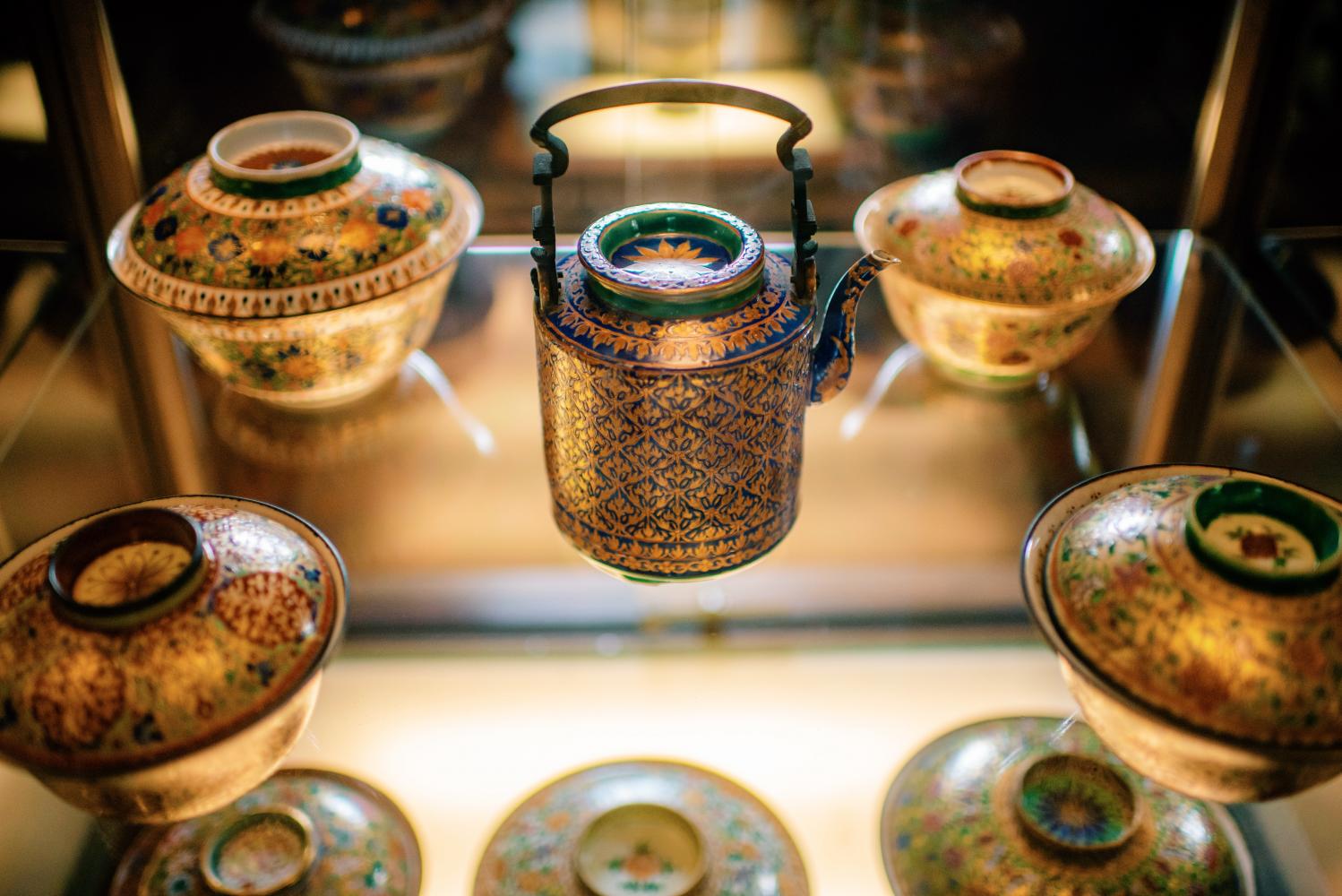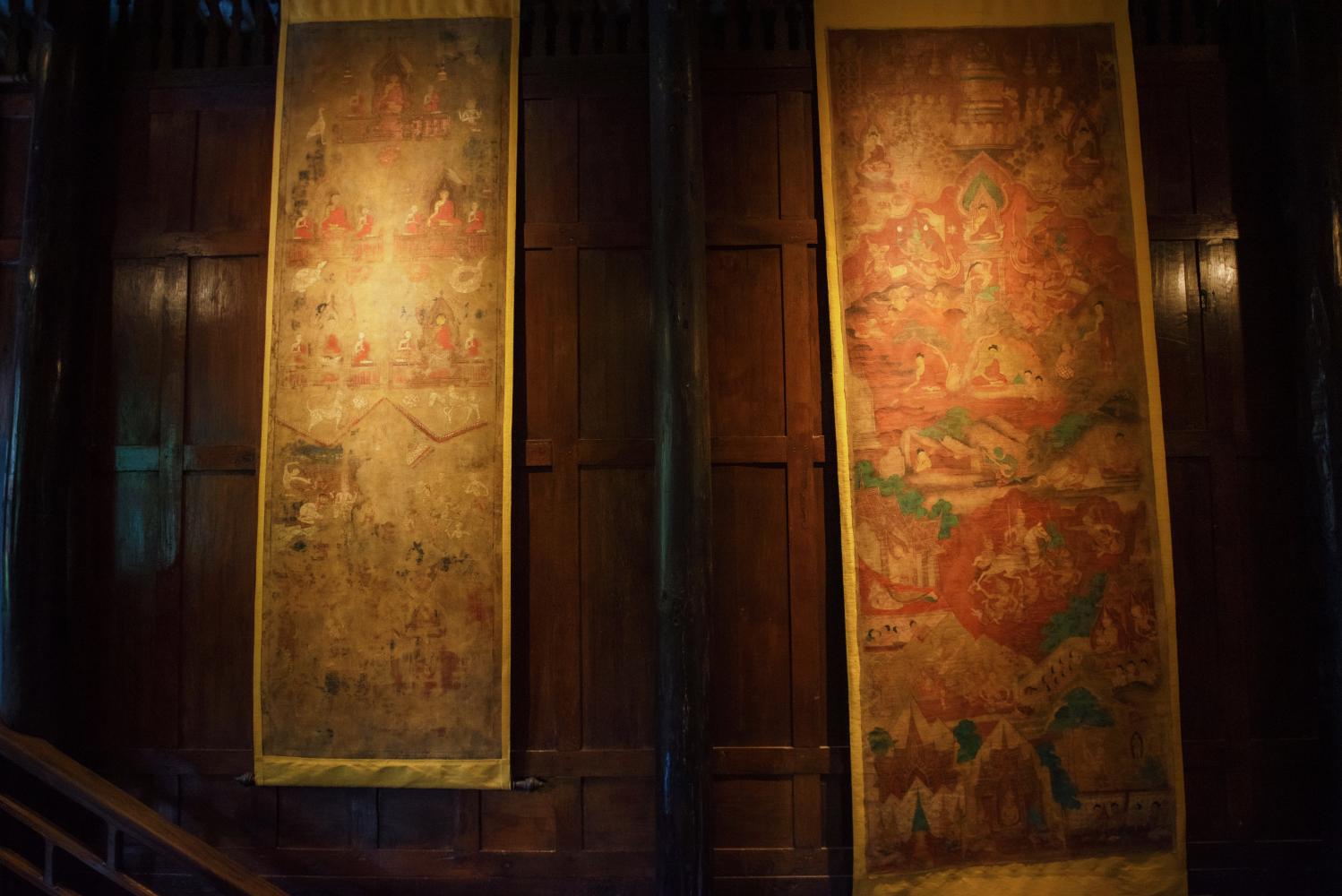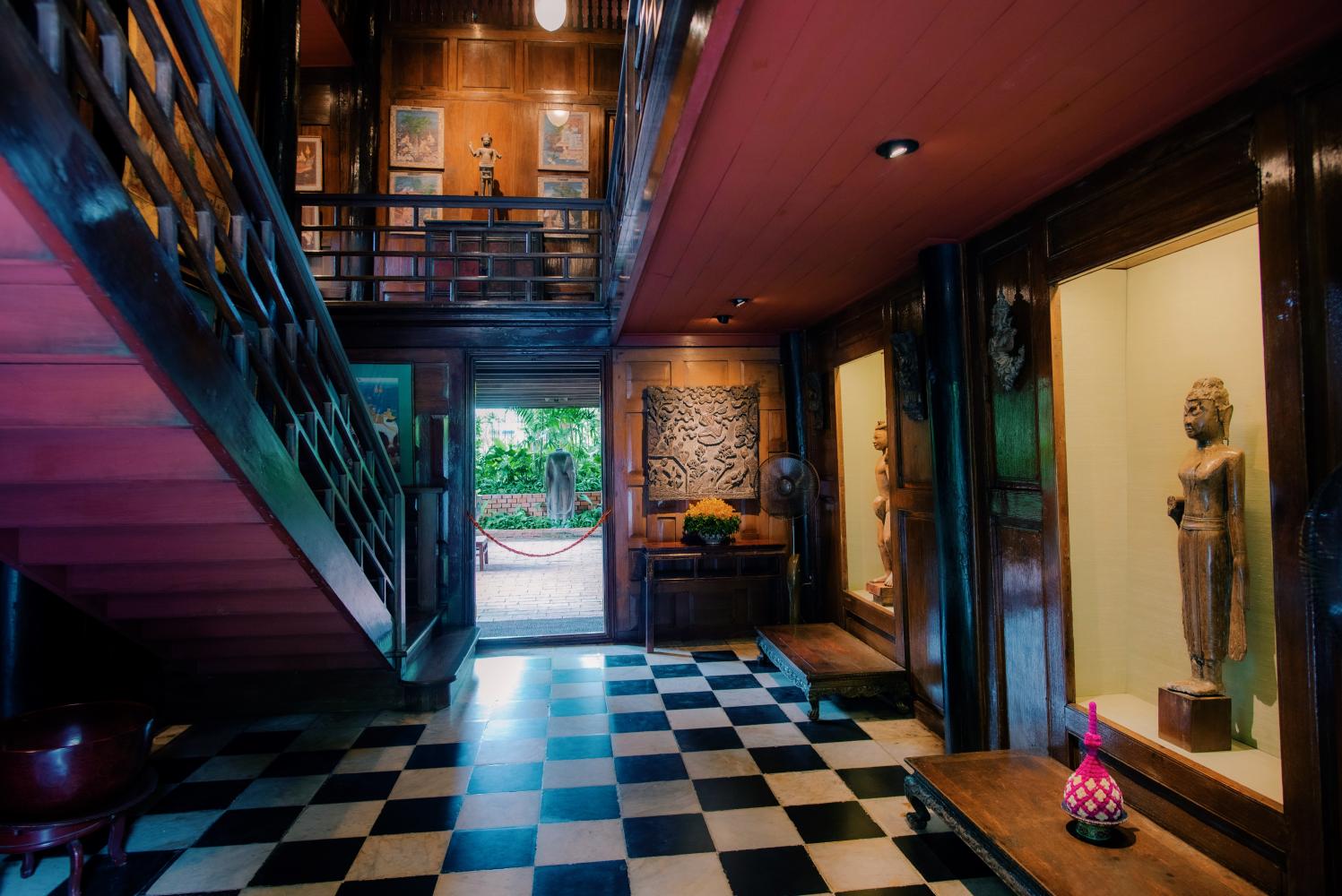Standing silently on the bank of Klong Saen Saep, the Jim Thompson House Museum recently reopened its doors, but it finds itself off the beaten path of local explorers. Hemmed in by a lush tropical garden, it has managed to maintain a nostalgic ambience of the 1950s as a tribute to the king of Thai silk. However, it is now promoting itself as a weekend getaway for people of all ages.
Constructed in 1959, this 1-rai compound comprises of six classic Thai teak homes and boasts a rare collection of more than 200 antiques and artworks from Thompson's treasure. Visitors can enjoy a programme of guided tours -- available in English, French, Chinese, Japanese and Thai -- to travel back several periods in Thailand and learn about how Thompson invigorated the Thai silk industry.
"Our museum has been popular with tourists from Spain, England, the US, China, Japan, South Korea and India. As a result of the Covid-19 pandemic, the number of visitors has drastically decreased from 500 to 20 on weekdays and 1,000 to 50 during weekends," said Natteera Yumongkol, a senior manager of the James HW Thompson Foundation.
"We plan to expand our reach to local residents and expats by creating a programme of walking tours. This will be a collective effort between the Chulalongkorn Art Center, Bangkok Art and Culture Centre and the Jim Thompson House Museum."
Following social distancing measures, each tour is reserved for four people and takes around 35 minutes. The journey starts at the entrance hall which is a striking mixture of Thai- and Western-style architecture. The floor is covered with black and white marble tiles from Belgium and Italy to cool the temperature while the window frames used to display a 400-year-old teak Buddha statue were crafted by a Chinese artisan in the 17th century.

The living room overlooks the Baan Krua community where the first Jim Thompson silk factory was set up.
Standing alongside is a sculpture of a Burmese villager made with teak during the 19th century and carved wood wall art depicting the legend of Phra Malai, who travelled to heaven and hell.
"Jim Thompson worked as an architect before becoming an officer in the Office of Strategic Services, the forerunner of the CIA, and travelled to Thailand during World War II. He fell in love with Thai traditions and decided to settle down in Bangkok," said Sakawrat Pimsak, who is in charge as our guide.
"Thompson bought six Thai homes in various parts of the country and spent six months reassembling them to be a residence. He also collected a wide selection of antiques and artefacts both from Thailand and neighbouring countries like Cambodia and Myanmar. We've learned about their sources from notes and letters Thompson wrote to his nephew in the US."
With a staircase leading to the upper floor, visitors are greeted with a striking 200-year-old Pha Phra Bot, a powdered colour painting on white cotton recounting the life of the Buddha and the Vessantara Jataka. An 800-year-old Lopburi-style statue of a seated Buddha with seven-headed naga is also on view.

Bencharong porcelains were specially made for the royal court.
"Traditional Thai paintings were among the first works of art to catch Thompson's attention. He collected them during a business trip to buy silk. All paintings were created by local masters during the 17th and 19th century. Normally, villagers presented Pha Phra Bot to a monk in making merit for their ancestors," Sakawrat said.
The old kitchen has been turned into a gallery of exquisite Bencharong porcelain that was crafted by Chinese artisans to use in the royal court between Ayutthaya and early Rattanakosin periods. The highlight is a series of hand-painted wine kettles with different motifs of deities like Narasimha, an avatar of the god Vishnu, and the exquisite 200-year-old ceramic tableware on gold background ornamented with flowers, birds and butterflies.
Next door is a dining room, complete with a collection of 400-year-old Chinese porcelain tableware created in the 17th century and an unfinished gold-lacquered wood table engraved with a monogram of King Chulalongkorn.
Spacious and cosy, the living room seems like a time capsule transporting visitors back to when the first Jim Thompson silk factory was set up in the Baan Krua community, home to Cham migrants from South Vietnam.
"Thompson shared new dying techniques with a group of Cham villagers to make their silk more colourful. That became Jim Thompson's signature silk and it gained popularity in European markets. When Thompson decided to build his home here, a skilful villager by the name of Suri gave him a house to express gratitude. Now, her house has been turned into a living room overlooking a canal and the Baan Krua community. This is a house of friendship," Sakawrat recounted.

Pha Phra Bot illustrates the life of the Buddha.
Inside, the room is graced with innovative lamps made from traditional Thai drums, an 800-year-old U-thong style Buddha head, and venerable carved wood sculptures of Nat spirits from Myanmar.
Apart from an old work desk, the atelier is showcasing a 1,800-year-old sacred Buddha image crafted from sandstone in the Dvaravati era and a copy of a map used by the Siamese diplomatic delegation to France during the reign of King Narai the Great.
The reception room and bedroom are furnished with refined wood furniture dating back to the 19th century. Also on view is a wood dressing table in a hybrid of Thai and Victorian designs, a wood temple screen covered with dark green glass mosaic, which was originally inlaid with 450 little Buddha ornaments outlined in gold glass, and a mouse house carved by Chinese craftsmen.
Back to the present, the Jim Thompson restaurant is the perfect place to recharge your batteries. During the weekend, visitors can enjoy a 590 baht set of khao chae -- white and pink rice served with floral water, seven kinds of side dishes and sweet mango with sticky rice.
Jim Thompson House Museum is at 6, Soi Kasemsan 2, Rama I Road. It's open daily from 11am to 6pm. Tickets are 100 baht for those under 22 and 200 baht for others. Find out more details, call 02-216-7368.

